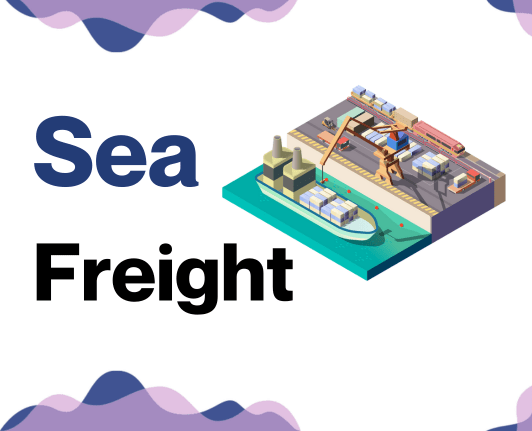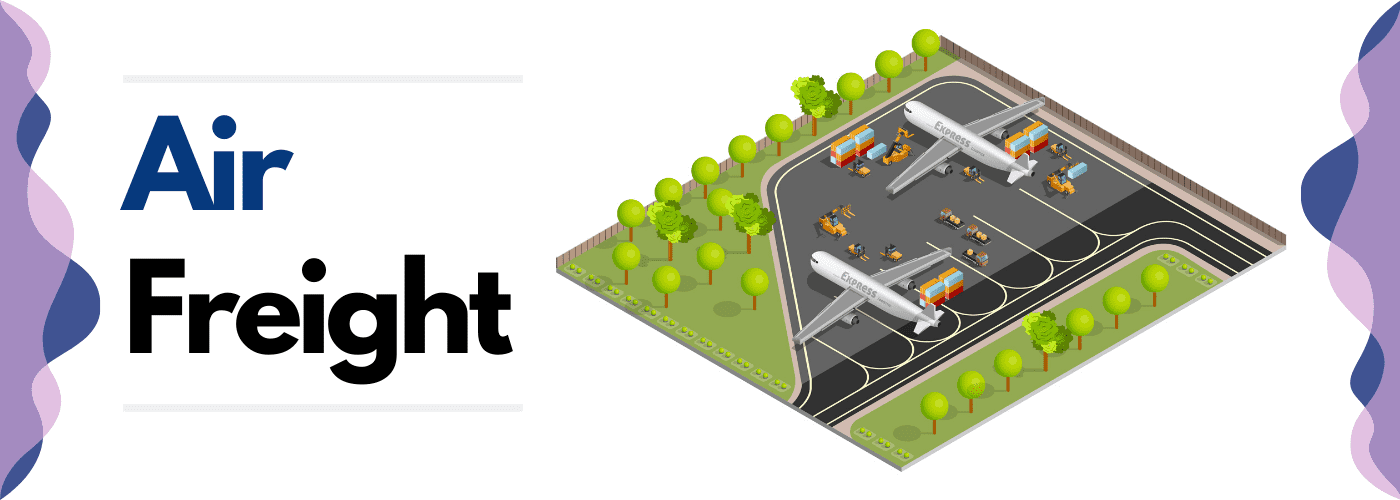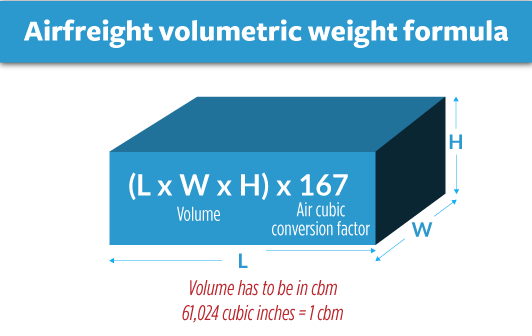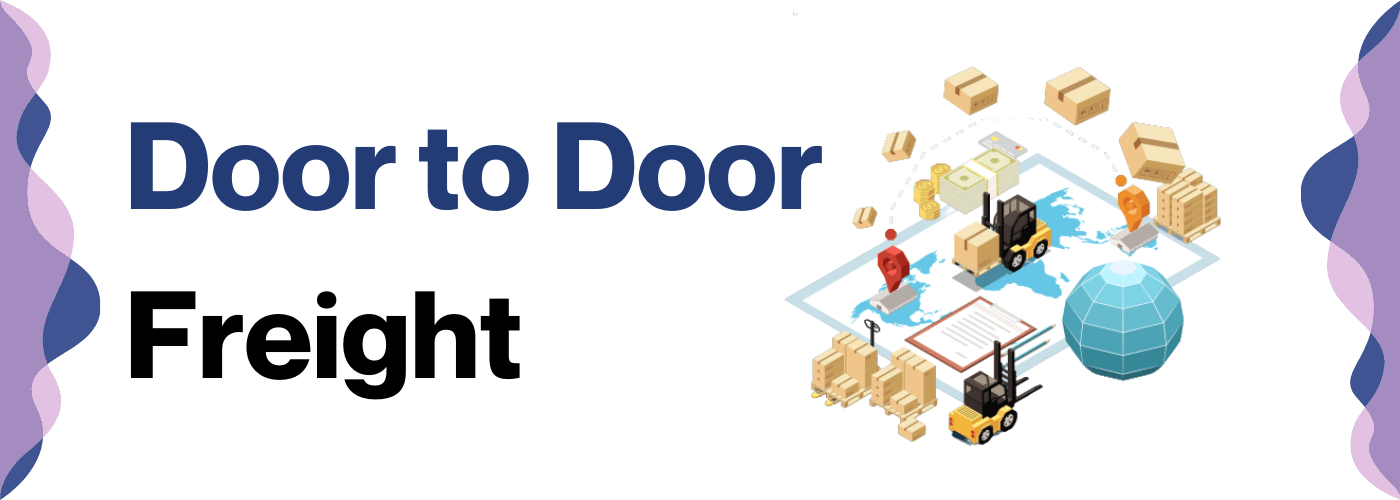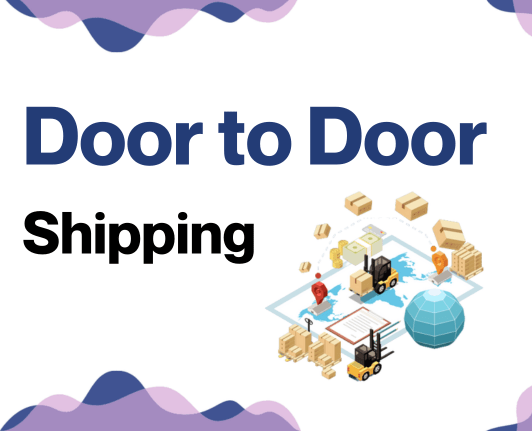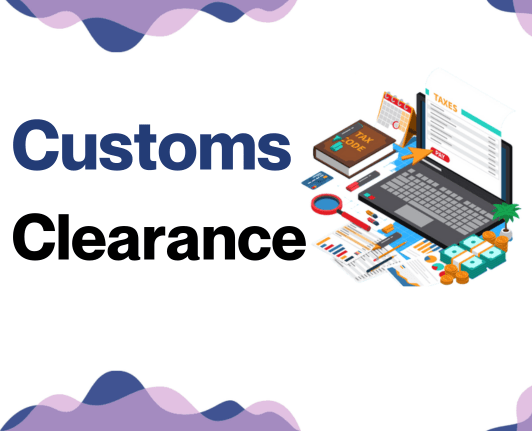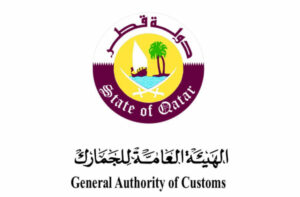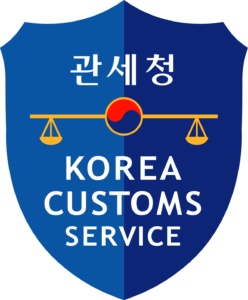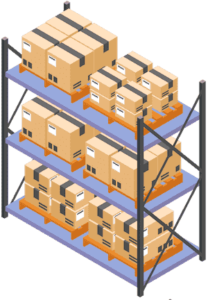Ever tried searching for a needle in a sand dune? That's how it can feel trying to fathom freight transport between Qatar and South Korea– gruelling and complex. Rates, transit times, customs regulations–where to even start? Fear not! This guide is your beacon in the desert of information, packing in everything from various freight options like sea, air, land, and rail, to demystifying the labyrinthine process of customs clearance, duty calculation, and taxes. The guide also offers actionable advice to businesses navigating this route for the first time or those aiming to streamline their operations. If the process still feels overwhelming, let DocShipper handle it for you! As an international freight forwarder, we'll conquer this beast on your behalf, turning logistics hurdles into your stepping stones of success.
Which are the different modes of transportation between Qatar and South Korea?
Embarking on a transporting journey from the sun-blazed sands of Qatar to tech-smart South Korea might sound like a scene from a mesmerizing tale, but it's everyday business reality. Given the vast geographical divide, terrestrial transportation tends to be a tricky choice. So, we're left with two primary contenders: air and sea. Think of them as Arabian racehorses within reach - one swift as the wind, the other steady as the tide. Each has its perks and gives a different rhythm to your shipping story. Your ideal choice boils down to your cargo's nature, urgency, costs, and your logistic playbook.
How can DocShipper help?
Shipping between Qatar and South Korea can be complex, but that's where DocShipper shines. We handle every step: from transport organization to swift customs clearance. Don't be left in the dark; ship smart with DocShipper. Got questions or need a free estimate? Connect with our consultants in less than 24 hours.
DocShipper Tip: Sea freight might be the best solution for you if:
- You're dealing with hefty quantities or large-scale goods. Sea freight is your go-to for maximizing space without stretching your budget.
- Your cargo doesn't have an urgent deadline, as sea freight typically has longer transit times compared to air or rail.
- Your shipping routes are between major ports, allowing you to leverage the extensive global network of sea shipping lanes.
Sea freight between Qatar and South Korea
Got a hefty shipment from Qatar to South Korea? You're in good company; it's a bustling trade route, where ocean freight is the lifeblood. Key cargo ports like Hamad in Qatar and Busan in South Korea form the nerve centers of this shipping connection, crucial to their thriving industrial scenes. Opting for sea freight? Smart move. It's your best bet for shipping large volumes without denting your wallet, albeit, a little slower. Expect bumps on the finish line? You're not alone. Shipping between these countries can be riddled with complications and common blunders. It's akin to trying to navigate a maze blindfolded. But, don't worry, we've laid out the blueprint for you. This guide has the A to Z of specifications and processes to make your shipping smooth sailing. Take our words as your compass, you'll never lose your way in the high seas of logistics. So, pull up a seat, and let's unravel the ropes of efficient ocean shipping.
Main shipping ports in Qatar
Hamad Port
Location and Volume: Situated in Umm Al Houl, Qatar, this port is essential for its capability to handle all types of cargo and its large container capacity. With a shipping volume that exceeds 2 million TEU, it's the largest port in the Middle East.
Key Trading Partners and Strategic Importance: Hamad Port's key trading partners include countries within the Gulf Cooperation Council, China, India, and Southeast Asian countries. It plays a strategic role in Qatar's economy, supplementing the growth of Qatar's imports and exports sector.
Context for Businesses: If you're looking to tap into Middle Eastern and Asian markets, Hamad Port may be an essential part of your logistics, given its modern facilities and seamless customs procedures. It's an ideal option for businesses prioritizing efficient and timely shipping.
Doha Port
Location and Volume: Located in the heart of the Qatari capital, Doha Port serves primarily as a cruise ship terminal, while handling a small portion of the country's cargo traffic. The shipping volume is significantly smaller than Hamad Port, but it commands strategic importance due to its location.
Key Trading Partners and Strategic Importance: Doha port's trading relations mostly include regional partners within the Arabian Gulf. It forms a strategic point of contact for both tourism and local freight movement.
Context for Businesses: If your business deals with smaller freight volumes and you're looking to benefit from shorter delivery times to the capital city, Doha Port with its excellent facilities can be a key to your shipping strategy.
Al-Ruwais Port
Location and Volume: Al-Ruwais Port is located in Northern Qatar and predominantly serves the gas and oil industry of the region. Its shipping volume is lower but specialized, handling project cargo and industrial materials.
Key Trading Partners and Strategic Importance: Al-Ruwais Port's trading partners include oil and gas entities across the globe, being a central point for the local petrochemical industry.
Context for Businesses: If your business operates within the oil and gas or the industrial sector, Al-Ruwais Port's expertise and efficient handling of specialist and hazardous goods may serve your logistic needs.
Main shipping ports in South Korea
Port of Busan
Location and Volume: The Port of Busan is strategically located on the southeast tip of the Korean Peninsula and serves as a significant global transshipment port. It handles a shipping volume of over 20 million TEUs annually.
Key Trading Partners and Strategic Importance: This port is a pivotal player in East Asia, often seen as the gateway between the Pacific Ocean and Eurasia. Its key trading partners include China, the United States, Vietnam, Hong Kong, and Japan.
Context for Businesses: Should your business need to tap into North Pacific and Eurasian markets, the Port of Busan, due to its strategic location and superlative facilities, can play a vital role in your logistics and distribution system.
Incheon Port
Location and Volume: Incheon Port lies to the northwest of South Korea, near the capital city, Seoul. With a shipping volume of 3 million TEUs, it handles substantial traffic chiefly due to its excellent connectivity to major local industrial areas and China.
Key Trading Partners and Strategic Importance: Incheon Port is strategically important due to its proximity to China's Bohai Rim area. Its main trading partners are China, Vietnam, the United States, Indonesia, and Russia.
Context for Businesses: If your business activities are interestingly concentrated in Northeast Asia and particularly towards China, Incheon Port's convenient location close to the Chinese market makes it an attractive choice.
Port of Pyeongtaek-Dangjin
Location and Volume: Located on the west coast of South Korea, the Port of Pyeongtaek-Dangjin has a significant shipping volume of around 2 million TEUs.
Key Trading Partners and Strategic Importance: Pyeongtaek-Dangjin Port's strategic importance lies in its capacity to handle heavy cargoes and its proximity to Seoul, Gyeonggi, and Chungcheong regions. Major trading partners are China, the US, Indonesia, Saudi Arabia, and Australia.
Context for Businesses: If your industry involves dealing with heavy cargo or you are particularly focussed on rapid local delivery to Seoul and surrounding regions, the Port of Pyeongtaek-Dangjin can be significantly beneficial for your business.
Port of Ulsan
Location and Volume: The Port of Ulsan, located in the south-east, is primarily an industrial port with large shipping volume with a strong focus on auto and petrochemical storage.
Key Trading Partners and Strategic Importance: The port's key partners are China, Singapore, Saudi Arabia, Qatar, and the US. It's strategically important due to its connection to the Ulsan Industrial Complex, making it crucial for industrial commodities.
Context for Businesses: If your business is based in the automobile or petrochemical industries, the Port of Ulsan, renowned for its specialized facilities, may suit your shipping strategy perfectly.
Port of Gwangyang
Location and Volume: Gwangyang Port, located on the southwestern coast, handles a shipping volume of 2.4 million TEUs, making it the 3rd largest cargo port in South Korea.
Key Trading Partners and Strategic Importance: The port's strategic location near the Gwangyang Bay Free Economic Zone makes it crucial for South Korea's economic activities. Its key trading partners include China, Singapore, the US, Japan, and Brazil.
Context for Businesses: If your business relies on access to major industrial and economic zones, the Port of Gwangyang, given its strategic nearness to the Gwangyang Bay Free Economic Zone, can be a key waypoint in your logistical plan.
Port of Mokpo
Location and Volume: Mokpo Port, located in the southwestern part of the Korean peninsula, is not as large as the others but still plays a significant role in South Korea's coastal shipping.
Key Trading Partners and Strategic Importance: The port mainly deals with coastal trade and fishing. Thus, its strategic importance is relatively local but significant nonetheless.
Context for Businesses: If your trade is coastal or fishery-based, Mokpo Port, with its specialized facilities for coastal and fishery shipping, could be a vital addition to your shipping strategy.
Should I choose FCL or LCL when shipping between Qatar and South Korea?
Embarking on a shipping journey between Qatar and South Korea? Puzzling over whether to choose Full Container Load (FCL) or Less than Container Load (LCL)? Your decision could be the game-changer in your shipping cost, transit time, and overall success. In the ocean of freight shipping, these are major buoys guiding your path. Let’s dive, unravel the ropes, and help you make a well-informed, cost-efficient, and productive choice between FCL and LCL. It's your cargo's voyage plan - let's plot it wisely!
LCL: Less than Container Load
Definition: LCL, or Less than Container Load, shipment is a type of ocean freight where multiple shippers' goods are consolidated into one container. This method is used for shipping smaller volumes of goods and provides flexibility for lower-volume shipments.
When to Use: LCL is most appropriate when your cargo's volume falls below the threshold of 13 to 15 CBM. This method comes handy when a full container is cost-prohibitive or you do not have enough goods to fill a container.
Example: Imagine you're a Korean manufacturer wanting to send a small volume of electronic components to a client in Qatar. It would be an unnecessary cost to send a full container. Instead, using LCL shipment would allow you to share container space with other shippers, thereby reducing costs.
Cost Implications: With LCL freight, costs are allocated based on the volume that your cargo occupies within the container. This means you only pay for the space you use, making it an economical choice for smaller shipments. However, remember other fees may apply for customs clearance and handling.
FCL: Full Container Load
Definition: FCL, or Full Container Load, refers to when an entire shipping container is booked by one shipper. This is a form of ocean freight commonly known as FCL shipping.
When to Use: FCL is the way to go if you're shipping large volumes. If your cargo occupies more than 13, 14, or 15 cubic meters (CBM), FCL becomes the cost-effective choice. In addition, the security of your goods is enhanced as your cargo remains sealed in an FCL container from its origin in Qatar to the destination in South Korea.
Example: A machinery exporter with a shipment of large equipment that fills a 20'ft container or a 40'ft container would find FCL advantageous. The items remain sealed and secure inside, reducing chances of damage during transit.
Cost Implications: While FCL may initially seem expensive due to the per-container FCL shipping quote, it provides lower cost per unit shipped for larger loads. Thus, companies with high-volume shipments or valuable, fragile cargo often find FCL to be a more economical and secure shipping option.
Unlock hassle-free shipping
Struggling to decide between consolidation or full container shipping from Qatar to South Korea? Let DocShipper take that weight off your shoulders. Our seasoned freight forwarders simplify complex decisions based on cargo type, quantity, urgency, and budget. With a firm commitment to hassle-free shipping, our ocean freight experts can help guide you to the most suitable choice. Ready to demystify shipping? Reach out now for your free shipping estimation. Let us do the heavy lifting for you.
How long does sea freight take between Qatar and South Korea?
Sea freight between Qatar and South Korea can take roughly around 20 to 30 days, on average. This duration is however influenced by various factors such as the specific port of departure and arrival, the weight, and the nature of the goods being transported. Therefore, it's recommended for businesses to get in touch with a freight forwarder like DocShipper to receive a more accurate and personalized quote.
| Qatari Ports | South Korean Ports | Average Transit Time (Days) |
| Hamad Port | Pusan Port | 30 |
| Ras Laffan Port | Incheon Port | 24 |
| Umm Said Port | Gwangyang Port | 30 |
| Al Wakrah Port | Ulsan Port | 30 |
How much does it cost to ship a container between Qatar and South Korea?
Shipping a container from Qatar to South Korea can cost anywhere from a few hundred to several thousand dollars per cubic meter (CBM). The variation in ocean freight rates hinges on multiple elements like the Points of Loading and Destination, the carrier chosen, the type of goods, and even the month's market dynamics. Therefore, pinpointing an exact shipping cost isn't feasible without a detailed examination of these aspects. Rest assured, our dedicated team of shipping specialists scrutinizes each detail to offer the most competitive rates. Remember, we tailor our quotes to fit your exclusive shipping needs and scenarios.
Special transportation services
Out of Gauge (OOG) Container
Definition: This type of sea freight involves the use of special open-top containers or flat-rack platforms to transport out of gauge cargo, i.e., items that exceed the standard dimensions of regular containers.
Suitable for: Oversized cargo such as heavy machinery, construction equipment, and other large items that can't fit in a standard shipping container.
Examples: If you're exporting large construction equipment like cranes or excavators from Qatar to South Korea, an OOG container could be your best bet.
Why it might be the best choice for you: Perfect for businesses in need of shipping large, awkwardly sized items which typically challenge the confines of standard shipment methods.
Break Bulk
Definition: Otherwise known as 'break bulk,' this method involves the transport of goods that aren't containerized and are handled individually during sea transport.
Suitable for: Infrastructure materials, construction equipment, or industrial parts.
Examples: You can easily ship items such as steel girders used for building construction or large turbines for a South Korean power plant using the break bulk method.
Why it might be the best choice for you: An ideal option if you're dealing with cargo that is too heavy or too big for standard containers but doesn't necessarily require OOG containers.
Dry Bulk
Definition: Instead of using containers, dry bulk involves packaging materials like coal, cement, or grain in large, loose cargo loads.
Suitable for: Commodities in large quantities without the need for packaging.
Examples: If you're in the grain export business from Qatar to South Korea, then dry bulk shipments could be a good choice for your business.
Why it might be the best choice for you: This option suits businesses who deal with homogeneous, loose products that can be piled up and don't require individual handling.
Roll-on/Roll-off (Ro-Ro)
Definition: Ro-ro vessels are ships designed to carry wheeled cargo that rolls on and off the ship on its own or using a platform vehicle, such as a self-propelled modular transporter.
Suitable for: Vehicles and cargo that can be driven directly into the ro-ro vessel.
Examples: If your business involves exporting cars, trucks, or trailers from Qatar to South Korea, this method perfectly fits your requirements.
Why it might be the best choice for you: The Ro-Ro option is the most suitable method for businesses exporting transportable goods. It's cost-effective and efficient as minimal lifting is required.
Reefer Containers
Definition: Refrigerated containers, or 'reefer containers,' are temperature-controlled shipping containers used to transport goods that require specific temperatures.
Suitable for: Perishable goods like fruits, vegetables, fish, meat, dairy products, and even some pharmaceuticals.
Examples: A food company in Qatar looking to export fish or fresh vegetables to South Korea would find reefer containers their best choice.
Why it might be the best choice for you: The reefer containers' temperature control mechanism ensures your perishable commodities arrive at their destination in perfect condition.
At DocShipper, we understand that choosing the right shipping option between Qatar and South Korea can be complex. That's why our expert team is always on hand to provide personalized advice tailored to your specific logistics needs. Feel free to get in touch for your free shipping quote in less than 24h.
DocShipper Tip: Air freight might be the best solution for you if:
- You're up against the clock or have a non-negotiable delivery date. Air freight is your fastest bet for meeting tight timelines.
- Your shipment is on the smaller side, falling below 2 CBM. Air freight is particularly well-suited for compact cargo loads.
- Your goods are destined for locations that aren't well-served by maritime or rail options. Air freight expands your reach by connecting you to a vast array of international airports.
Air freight between Qatar and South Korea
Air freight between Qatar and South Korea is like your favorite courier service - speedy, dependable, and perfect for small but precious packages. Think of premium electronics or critical automobile parts, where value outweighs volume. It might cost more than sea freight, but the quick transit time is of essence for merchandise with a short shelf-life or market demand that can't wait.
But here's the catch - many businesses treat air freight like a regular parcel service, inadvertently paying more than they should, all due to miscalculations and lack of know-how. It's as if you're baking a cake for the first time and don't measure the ingredients properly - the result isn't as sweet as you'd hope. Simple oversights like using the incorrect weight formula can drastically inflate costs. Through this guide, we'll bust some common misconceptions, helping you master the art of air freight.
Air Cargo vs Express Air Freight: How should I ship?
Are you mulling over how best to ship your goods between Qatar and South Korea and can't decide on the ideal method yet? Here's a snapshot: Air cargo uses the belly of passenger flights to transport your goods while express air freight employs dedicated planes. Choosing the right one can be like navigating an obstacle course without a map. Hence, let's delve into it to find the most efficient solution for your distinct business requirements.
Should I choose Air Cargo between Qatar and South Korea?
Air cargo is a reliable and cost-effective option for shipping goods between Qatar and South Korea. Notably, airlines such as Qatar Airways and Korean Air offer dedicated cargo services with regular fixed schedules, though these may result in longer transit times. But consider this, from about 100/150 kg (220/330 lbs) of cargo, air freight becomes more attractive. If budgetary efficiency is paramount, this mode of transport could suit your needs well. However, bear in mind that every shipping decision depends on the nature of your shipment and your business model.
Should I choose Express Air Freight between Qatar and South Korea?
Express air freight is an excellent choice for urgent or time-sensitive shipments under 1 CBM or 100/150 kg (220/330 lbs). This is a specialized service using dedicated cargo planes without passengers, ensuring swifter delivery. Firms like FedEx, UPS, or DHL are known for offering this service globally. Selecting express air for shipments between Qatar and South Korea means getting your cargo delivered faster and securely, perfect if your business urgencies demand rapid deliveries in small quantities.
Main international airports in Qatar
Hamad International Airport
Cargo Volume: As one of the busiest international airports in the Middle East, Hamad International Airport handles approximately 2.5 million tonnes of cargo each year, showcasing its impressive capacity to manage substantial freight traffic.
Key Trading Partners: Given its central location, Hamad International Airport facilitates trade predominantly with the Asian, European, and American markets, serving as a crucial link between the East and the West.
Strategic Importance: Besides being Qatar's leading airport, it functions as the main hub for Qatar Airways. Its strategic location in the Persian Gulf region enables quick access to the emerging markets of Asia, making it a significant player in international logistics.
Notable Features: The airport boasts technologically advanced cargo facilities, including a cargo terminal with a capacity of 1.4 million tonnes per year and temperature-controlled areas for perishable goods, underlining its ability to handle diverse cargo types.
For Your Business: If your business involves shipping perishables or desires extensive connectivity to Asia, Europe, or the Americas, Hamad International Airport might be your optimal choice, benefiting from its prime location and advanced cargo facilities.
Main international airports in South Korea
Incheon International Airport
Cargo Volume: Handling over 2.91 million tons of cargo in 2020, it's the third busiest cargo airport globally.
Key Trading Partners: Major trading partners include China, the US, Vietnam, Japan, and Hong Kong, encompassing sectors like electronics, machinery, and fashion goods.
Strategic Importance: As the largest airport in South Korea, it serves as the primary gateway for international freight.
Notable Features: Features a specialized cargo terminal and its location advantageously near the Free Economic Zone.
For Your Business: If your business deals with high volumes of international freight, Incheon's strong connectivity with global markets might be your optimal transportation hub.
Gimpo International Airport
Cargo Volume: Handled over 255,156 tons of cargo in 2018.
Key Trading Partners: Notably, Japan and China, primarily in industries such as machinery, textiles, and metals.
Strategic Importance: Being the closest airport to Seoul, it holds a strategic location for domestic and international logistics.
Notable Features: It houses two cargo terminals and is well-connected via road and rail networks.
For Your Business: If you're frequently trading with Japan or China, and have distribution needs in Seoul, Gimpo might be an ideal choice for your logistics chains.
Jeju International Airport
Cargo Volume: Handled around 35,830 tons of freight in 2018.
Key Trading Partners: Majorly the local markets catering primarily to the tourism and perishable goods industry.
Strategic Importance: Important for logistics within South Korea as it is the 2nd largest airport in terms of passenger traffic.
Notable Features: It is the primary gateway to Jeju Island, home to many booming businesses and local markets.
For Your Business: If your business involves perishable goods compatible with the local markets in Jeju, this airport might serve as an appropriate hub for your operations.
Gimhae International Airport
Cargo Volume: Handled over 125,500 tons of cargo in 2018.
Key Trading Partners: Includes Japan, China, and Taiwan - offering a mix of various industries like electronics, shipbuilding, and automobiles.
Strategic Importance: Located in Busan, it serves as a crucial gateway to vital shipbuilding and automobile industries in South Korea.
Notable Features: It includes special cargo facilities and is situated near Port Busan, facilitating multimodal logistics.
For Your Business: If your firm is into electronics, Gimhae's facilities and its proximity to Port Busan might prove advantageous for your shipping needs.
Cargo Volume: Handled approximately 23,800 tons of cargo in 2018.
Key Trading Partners: Majorly China, Japan, and the Philippines.
Strategic Importance: Used mainly for regional services and as a cargo hub for e-commerce-related businesses.
Notable Features: Well-connected to the Korean peninsula via extensive land transportation systems.
For Your Business: If you're an e-commerce business seeking to reach local markets promptly, Daegu's strategic location and connection to rail and road infrastructure might be perfect for your needs.
How long does air freight take between Qatar and South Korea?
The average shipping time between Qatar and South Korea by air freight is generally around 6 to 8 days. However, this is subject to change depending on various factors. It's important to note that specific departure and arrival airports, the weight of the cargo, and the nature of the goods being transported could potentially affect this timeline. So, to ensure accuracy in your planning, it would be advisable to consult with an experienced freight forwarder like DocShipper for precise transit times.
How much does it cost to ship a parcel between Qatar and South Korea with air freight?
Estimating air freight costs between Qatar and South Korea, the price averages between $3 to $5 per kg. Determining an exact cost is, however, trickier as several factors come into play. These include the precise distance from and to airports, package dimensions, total weight, and nature of goods. Our team is well-equipped to navigate these variables, working closely with you to offer the best rates, tailored to your specific shipment's requirements. Remember, we quote on a case-by-case basis, ensuring you receive value that matches your logistics needs. Want to learn more? Contact us and receive a free quote within less than 24 hours.
What is the difference between volumetric and gross weight?
Gross weight refers to the total weight of a shipment, including the goods, packaging, and any other material used in shipping. On the other hand, volumetric weight considers the size and space the package occupies on an aircraft.
In air cargo, the gross weight is straightforward, you literally weigh your packaged goods ready for shipping on a scale, in kilograms. For example, if the scale reads 100kg, your gross weight is exactly that. In pounds, it converts to 220.46 lbs.
Figuring out the volumetric weight is a bit different. It's calculated by multiplying the length, width, and height (L x W x H) of each package in centimeters and dividing the result by 6000. Suppose you have a box with dimensions 100cm x 100cm x 100cm. The volumetric weight becomes (100 x 100 x 100) / 6000 = 166.66 kg. That's roughly 367.41 lbs in conversion.
Express air freight services, the calculation is the same, but the divisor is different. The volume in cubic centimeters (cm^3) is divided by 5000 instead of 6000. Using the same box dimensions, your volumetric weight is now (100 x 100 x 100) / 5000 = 200 kg or approx. 440.92 lbs.
Now, you may ask - why do these calculations matter? It's all about cost. Air freight carriers charge based on whichever is higher between the gross weight and volumetric weight. Therefore, understanding these weight concepts can help businesses optimize packaging and potentially cut shipping costs.
DocShipper tip: Door to Door might be the best solution for you if:
- You prioritize a smooth, hassle-free shipping experience from start to finish. Door-to-door services manage the entire journey, from initial collection to ultimate delivery.
- You appreciate streamlined communication and would rather deal with one person. A dedicated agent is usually assigned to oversee every detail of your door-to-door shipment.
- You want limit the number of touchpoints for your cargo. Door-to-door services reduce the frequency of transitions between various transport methods, thereby lowering the likelihood of damage or loss.
Door to door between Qatar and South Korea
Understanding flawless shipping can be quite a task, right? Door to Door shipping, an all-inclusive gem in international logistics, takes that load off your shoulders. Especially between Qatar and South Korea, it's an unbeatable champion for saving you a headache or two. Intrigued? Let's unpack these excellent perks of Door to Door shipping and make heads or tails of it. So, buckle up - let's dive in!
Overview – Door to Door
Looking for hassle-free shipping between Qatar and South Korea? Door-to-door shipping could be your answer. It eliminates the complexities of the logistics chain, as everything from pick-up to delivery is handled for you. This shipping method brings simplicity and peace of mind, delivering your goods right at the doorstep. Although it might cost a bit more, its stress-free service makes it the most popular choice for our clients at DocShipper. However, always balance the advantages with potential delays that routes between these two countries may yield. This is a stress-free solution for the complex world of international shipping!
Why should I use a Door to Door service between Qatar and South Korea?
Ever felt like you’re playing hot potato with a shipment? No more! Choosing a Door to Door service between Qatar and South Korea can make your freight forwarding experience as easy as pie! Here’s the savory scoop in five bite-sized points.
1. Stress-Free Logistics: Door to Door services takes the logistics out of your hands (and your worries!). From start to finish, these services handle the coordination and transportation minutiae, so you can focus on what really matters - your business.
2. Deadline Daredevil: Need a vital shipment delivered stat? With Door to Door services, your time-sensitive cargo will be picked up and whisked straight to the desired location. Your deadlines become their mission, making them the Speedy Gonzalez of the freight world.
3. Complex Cargo, Simplified: Whether it’s fragile, oversized, or complicated goods, Door to Door services love a good challenge! Your complex cargo receives the care and attention it needs, ensuring it arrives right side up (and in one piece) at the finish line.
4. Ultimate Convenience: Embrace the power of convenience! Door to Door services mean you don't have to wrangle with additional trucking services for your cargo - they handle the entire journey, straight to the final destination. Imagine a personal chauffeur, but for your goods!
5. Costs, Crystal Clear: With Door to Door services, say goodbye to unexpected hitchhikers (read: extra charges) on your invoice. You’ll have upfront costs that cover the entire expedition so you can plan your budget without any headaches.
So, next time you’re wrapped up in the whirlwind of freight forwarding, remember Door to Door service is like a cool breeze that takes the weight off your shoulders, turning hot potato into a smooth sailing adventure!
DocShipper – Door to Door specialist between Qatar and South Korea
Stress-free door-to-door shipping from Qatar to South Korea, with DocShipper managing every step. Kick back and let us handle all aspects: packing, transport, customs, by air, sea, road, or rail. Our proficiency in international logistics ensures your peace of mind, paired with a dedicated account executive for streamlined communication. Need a quick cost estimate? Reach out to us for a free quote within 24 hours, or speak directly with our expert consultants at no extra charge. It's smooth shipping made simple, all within your reach.
Customs clearance in South Korea for goods imported from Qatar
Customs clearance is the key to successfully importing goods from Qatar to South Korea. This process, though complex, is crucial to understand. It's riddled with potential hurdles, like unforeseen charges and unexpected regulations. It demands a thorough understanding of customs duties, taxes, and quotas, as well as mastering the licensing process. Missteps can lead to your goods being held up in customs, derailing your project timelines. In the following sections, we'll explore these issues in detail to make your journey smoother. Remember, DocShipper is your partner in this process. We assist with all types of goods, anywhere around the globe. To kick-start your project, provide us with the origin and value of your goods and their HS Code. Our team awaits your call!
How to calculate duties & taxes when importing from Qatar to South Korea?
Recognizing the varying layers of customs duties and taxes when importing goods from Qatar to South Korea is essential to understanding the financial implications of your business logistics. This calculation hinges on several key factors - the country of origin, the HS (Harmonized System) code, the customs value of goods, the applicable tariff rate, and any additional levies.
Now, unraveling these knots begins with a seemingly simple, but imperative, a step. The first step in calculating these duties is to pinpoint the actual location where your products are manufactured or produced, known as the country of origin. This information is vital because in some cases, preferential tariff schemes may apply, ultimately influencing your overall cost.
Step 1 - Identify the Country of Origin
Determining the product's country of origin is your first task. It's the bedrock of your import process for a handful of reasons.
First, the country of origin directly influences tariff rates - different origins attract different rates. Second, it impacts anti-dumping, countervailing duties and retaliatory duties. Your goods might be subject to them depending on the origin.
Third, certain trade agreements reduce (or outright eliminate) tariffs. South Korea and Qatar, for example, have a Free Trade Agreement that offers these benefits.
Fourth, the restrictions imposed on the import of certain goods from specific countries governs what you can and cannot import. Lastly, the classification of your goods depends heavily on the origin. For example, 'Made in Qatar' adds a certain prestige and could fetch a premium over alternatives.
To ensure smooth transit, check import restrictions specific to South Korea. Also, keep in mind that Qatar has specific export rules. Even what might seem standard goods could have unique stipulations, so do your homework! Your journey to successful import starts with recognizing these core points - it's not just useful, it's utterly essential.
Step 2 - Find the HS Code of your product
The Harmonized System (HS) Code is an internationally standardized system of names and numbers that is used to classify traded products. It's created and maintained by the World Customs Organization (WCO), and it's used by customs authorities around the world to identify products when assessing customs duties, taxes, and regulations.
In many cases, the easiest way to find the HS Code for your product is to ask your supplier. Most suppliers are familiar with the products they are exporting and the relevant customs regulations, which include the correct HS Code.
If this information isn't readily available from your supplier, you can attempt to find your product's HS Code using a step-by-step process, we'll guide you through it:
1. Access the Harmonized Tariff Schedule through the HS lookup tool.
2. Input the name of your product into the search bar.
3. Review the Heading/Subheading column. Here is where you're likely to find your product's HS Code.
Just an important note: It is extremely essential to ensure accuracy when determining the HS Code for your product. Inaccurate or incorrect HS Codes can result in shipping delays and potential customs fines.
Here's an infographic showing you how to read an HS code.
Step 3 - Calculate the Customs Value
Understanding what 'customs value' has never been this straightforward. It's not just about the price tag on your goods, but there's more to it. Think of the customs value as your total expenses – the cost of your goods, their international shipping fee, and insurance costs, all bundled up. This is referred to as the CIF (Cost, Insurance and Freight) value.
Let’s assume your goods cost $5,000 (USD), the shipping is $500 and the insurance is $50. The customs value won't be simply $5,000, but $5,550! This is important because it influences the duties and taxes obligated by the South Korean authorities. So, spend those extra minutes getting this right – the extra effort can save you headaches later!
Step 4 - Figure out the applicable Import Tariff
Understanding your import tariff can make a huge difference in your shipping expenses. This is a tax imposed by a country on incoming goods, and each nation has its specific types. In South Korea, the most commonly used types are the Most Favoured Nation (MFN) Tariff and the Special Preferential Tariff.
To find the applicable tariff rate for your goods in South Korea, use the Goods Classification System by Korea Customs Service. Here's how you can do it:
1. Plug in the HS code that you identified previously. Let's say, for example, you're importing ceramics and the HS code is 691200.
2. Enter the country of origin, which in this case is Qatar.
The tool will then show you the import tariff rate applied to your product category.
Let's assume that the given import tariff rate is 8%. To determine the import duties, you need to calculate the CIF (Cost, Insurance, and Freight) value. Suppose your CIF costs amount to $5000. Therefore, your import duties would be 8% of $5000, which equals $400.
By understanding and factoring in these costs, you can strategically plan your shipping processes and budget, smoothing your business operations in South Korea.
Step 5 - Consider other Import Duties and Taxes
When shipping goods from Qatar to South Korea, it's not just the standard tariff rate that affects your bottom line. Sometimes, other import duties come into play, which can vary based on product type and origin country. Take the excise duty, for instance. This is a tax applied to certain goods, like alcohol or tobacco. If you're shipping such commodities, this could increase your overall tax commitment.
But it doesn't stop there. Depending on the goods in question, anti-dumping taxes may also apply. Say, for example, you ship an item to South Korea whose production cost in Qatar is lower than in Korea. An anti-dumping tax could be levied to keep a level playing field for Korean manufacturers.
Most importantly, bear in mind the Value Added Tax (VAT), a key component in Koreans' tax system. While rates vary, suppose it's a standing rate of 10% (keep in mind, this is an example and actual rates may vary). If your shipment of widgets values at $10,000, this would mean a $1,000 VAT.
Each of these additional charges can impact the total cost of your shipment, emphasizing the need for careful, early planning. Take the time to understand and calculate these extras to avoid unwelcome surprises. Ultimately, bringing clarity to these layers of taxation will pave the way for smoother, more predictable shipments.
Step 6 - Calculate the Customs Duties
In this step, we unwrap the knot of customs duties calculation. To begin, you need to identify the customs value of your goods. This will form the foundation upon which all calculations will be added.
Our first example is a straightforward one, just customs duties included. For a shipment worth $1000 with a 10% customs duty rate, the customs duties payable would be $100 ($1000 x 10%).
Adding in VAT, say your shipment is valued at $2000 with a 10% customs duty rate and a 5% VAT: customs duties would be $200 ($2000 x 10%). Add to this the VAT amount, calculated on the shipment's customs value plus the customs duties ($2000+$200 = $2200 x 5%), the VAT payable would be $110.
In the final example, let's include anti-dumping taxes, VAT, and Excise Duty. The shipment value is $3000, the customs duty rate is 10%, the VAT rate is 5%, the anti-dumping tax is 5%, and the Excise Duty rate is 7%. Start by calculating customs duties ($3000 x 10% = $300), then add the anti-dumping tax ($3000 x 5% = $150). The VAT is calculated on the sum of shipment value, customs duties, and anti-dumping tax (($3000+$300+$150) x 5% = $172.5). Lastly, Excise Duty is calculated on the total value of the shipment including VAT (($3000+$300+$150+$172.5) x 7% = $248.58).
Unsure about all this? Let DocShipper handle your customs clearance complexities worldwide. Reach out for our swift, less-than-24-hour free quote service, and never overspend on duties and taxes again!
Does DocShipper charge customs fees?
Though DocShipper serves as a customs broker in Qatar and South Korea, we don't levy customs duties. What we do charge are customs clearance fees that cover our services. The actual customs duties and taxes are payable directly to the government, not us. We ensure transparency by offering you the official documents from the customs office, proving you've only paid the mandatory government charges. Think of it like visiting a theme park: you pay us for the guided tour (customs clearance), but the entry fee (customs duties) goes directly to the park!
Contact Details for Customs Authorities
Qatar Customs
Official name: Qatar General Authority of Customs
Official website: https://www.customs.gov.qa/
South Korea Customs
Official Name: Korea Customs Service
Official Website: http://www.customs.go.kr/english/main.do
Required documents for customs clearance
Avoid customs clearance hurdles by understanding the key paperwork: Bill of Lading, Packing List, Certificate of Origin, and the elusive Documents of Conformity (CE standard). In this guide, you'll gain clarity on these essentials that could make or break your shipment's timely delivery - so, let's defeat the red-tape monster together!
Bill of Lading
When you're shipping goods from Qatar to South Korea, the Bill of Lading (B/L) is your best friend. It's like a passport for your shipment, marking when ownership transitions from seller to buyer. Traditionally, you'd send the B/L via courier, but an electronic, or telex, release can save you both time and hassle. It's transmitted digitally and accepted as proof of ownership, making your life easier. If your shipment’s taking to the skies, you'll need an Air Waybill (AWB) instead. So, whether it's electronics headed for Seoul or dates for Daegu, don't forget to complete and correctly issue your B/L or AWB. It's a must-have for a smooth customs clearance process and timely delivery.
Packing List
If you're shipping goods from Qatar to South Korea, don't overlook the importance of an accurate Packing List - it's your roadmap to a smooth customs process. It details every item in your shipment, from quantities, descriptions, to weight, and it plays a pivotal role in both sea and air freight. Picture the Packing List as a passport for your goods; without it, they won't pass border controls. Let's say you're shipping electronics. If your Packing List vaguely describes the items or if the numbers don't match the actual contents, this could delay your shipment, inflate customs duties, or worse—lead to a seizure. Save your business from these headaches by taking the Packing List seriously. Be precise, be thorough. It's more than a formality—it's the lifeline of your shipment.
Commercial Invoice
Navigating between Qatar and South Korea? The Commercial Invoice is crucial: it's your proof of sale and it carries vital details about your shipment. It must match the information on other shipping documents, or you could face dreaded delays at customs. Remember to include specifics like the full names and addresses of both seller and buyer, an accurate description of your goods (even down to product codes if available), quantity, prices, plus delivery and payment terms. Got special goods or using a trade agreement? Note it down. Here's the clincher: Inconsistencies will throw up red flags, so double-check everything. Tight coherence between your documents is your smooth-sailing secret. Now, you're a step ahead.
Certificate of Origin
Navigating customs between Qatar and South Korea? Your Certificate of Origin (CO) is your best friend. It's like a passport for your products, legitimizing their nationality. In our vast shipping experience, a clear CO - pinpointing Qatar as your items' cradle - has often helped businesses score preferential customs duty rates. Better yet, shipping a Korean kimchi fridge or Qatari gas condensates? With accurate CO, your freight might just zip through Korean or Qatari customs like a VIP at the airport. Don't overlook this powerful document; it could be your golden ticket to smoother, cost-effective shipping.
Get Started with DocShipper
Tired of the arduous customs clearance steps between Qatar and South Korea? With DocShipper, we handle every intricate detail, saving you time, money, and paperwork headaches. Benefit from our profound expertise and tailored solutions. For a seamless, worry-free shipping experience, contact us today! Receive a free quote within 24 hours. Don't stress, let us handle the rest!
Prohibited and Restricted items when importing into South Korea
Understanding what items South Korea deems as prohibited or restricted can be a complex task for anyone importing. Expensive penalties, shipping damage, or even seizure of your items can occur if you're unaware of these regulations. Our guide will help you avoid these potential hassles and unexpected issues.
Restricted Products
- Live Animals: You have to apply for the Import Quarantine Permit at the Animal and Plant Quarantine Agency.
- Unprocessed Food and Agricultural Products: For these, you need to secure the Plant Quarantine Certificate from the National Plant Quarantine Service.
- Medicine/Pharmaceuticals: Get yourself the Pharmaceutical License from the Korea Food & Drug Administration.
- Controlled Substances and Narcotics: Secure a Special Import/Export License from the Korea Customs Service for these.
- Guns, Weapons, and Explosives: You'll be needing the Explosives Safety Certificate from the Korea Occupational Safety & Heath Agency.
- Radio Equipment and Telecommunication Terminals: Don't miss getting the Radio Research Agency Approval.
- Seafood: The Fisheries Activity Permission from the Ministry of Oceans and Fisheries is necessary for this.
Remember, this is not an exhaustive list, and additional rules and regulations may apply. Always check with the relevant agencies for the most updated information.
Prohibited products
- Narcotics and psychotropic substances
- Pornographic materials
- Any counterfeit goods or imitations
- Goods infringing upon intellectual rights
- Counterfeit currency or fraudulent securities
- Soil or any other earth material
- Certain animal and plant species protected under CITES
- All types of waste, junk, and scrap vehicles
- Weapons, including firearms, swords, explosives, and chemical weapons, without appropriate permit
- Certain radioactivity related materials
- Unauthorized medical substances and materials
- Posts against public order or morality.
- Self-defense gear like tear gas or electrified batons.
Are there any trade agreements between Qatar and South Korea?
Yes, there is an active trade relationship between Qatar and South Korea with trade agreements intended to augment business possibilities. For example, a substantial proportion of Qatar's Liquefied Natural Gas exports are destined for South Korea, catalyzing active discussions around enhanced bilateral cooperation. Interestingly, investment environments are continually improving due to anticipated infrastructure projects, such as expanding port facilities. As a business owner, you can leverage these developments and bilateral ties to your advantage when shipping goods between these countries, potentially simplifying customs procedures and decreasing costs. Stay informed as new opportunities may arise with future trade agreements and cooperative projects.
Qatar - South Korea trade and economic relationship
Historically, Qatar-South Korea relations have blossomed into credible economic cooperation, escalating considerably from the 1970s with development projects and following decades focusing on energy and construction sectors. Today, the bilateral partnership has matured with key areas involving hydrocarbon, construction, technology, and healthcare industries. Goods exchange notably involves LNG (Liquefied Natural Gas) from Qatar and automobiles and electronics from South Korea. In terms of numbers, close to 200 Korean companies operate in Qatar, with joint projects amounting to approximately USD 30 billion. In 2022, the internal volume traded was around USD 11.2 billion, hinting at the sturdy investment ties between these nations. This mutualistic economic relationship continues to foster development and opens up emerging markets with potential opportunities for businesses in various sectors.
Your Next Step with DocShipper
Shipping from Qatar to South Korea, or vice versa? Complex customs procedures, uncertain transit times, and coordinating logistics can be overwhelming. Get back to what really matters - your business. At DocShipper, we streamline the shipping process for you. Experience hassle-free, expertly managed shipping every time. Don't get lost at sea, let our experts guide you. Contact us now!
Additional logistics services
Discover our full range of logistics solutions, tailored to simplify your supply chain from factory door to customer doorstep. Beyond shipping and customs, we handle every nuance for a streamlined logistics experience.
Warehousing and storage
Struggling to secure reliable warehouses in Qatar and South Korea? The stakes are high especially when your goods require specific conditions like temperature control. Don't fret! You can focus on your business while we handle the warehousing intricacies. More info on our dedicated page: Warehousing
Packaging and repackaging
In the bustling trade between Qatar and South Korea, packing holds the key! Proper packaging ensures your goods weather any storm, be it long haul sea trips or bustling Incheon airport. Trustworthy agents are the map and compass in this process; they scrupulously pack your exquisite Qatari dates or sensitive car parts, prepped and primed for Asian markets! This focused care makes all the difference - your products arrive intact and ready to conquer new territories!
Cargo insurance
Securing your goods during transit is key. Unlike fire insurance, cargo insurance covers your goods even against logistical surprises. Think of a seafaring journey held up by a sudden storm—cargo insurance has got it covered. It's all about mitigating risks and ensuring your valuable shipments reach their destination unscathed. A lifeline in an intricate world of shipping, it offers prevention-focused measures effectively safeguarding your peace of mind.
Supplier Management (Sourcing)
Are you struggling to find reliable suppliers in Asia or East Europe? DocShipper eases this pain by sourcing and managing just the right ones for your business needs. Say goodbye to language barriers and complex procurement processes as we guide you every step of the way. Realize your Qatar-South Korea shipping plans smoothly with us! For more details, visit our dedicated page: Sourcing services
Personal effects shipping
Shipping personal effects from Qatar to South Korea requires a delicate touch. Fragile and bulky items demand special handling. Imagine we're like a first-rate art collector, ensuring your cherished grandfather clock or treasured art piece is delivered safely, regardless of size. We offer flexible solutions, ensuring your keepsakes reach their new home intact and unscathed. It's your peace of mind, as we transform the complex into the uncomplicated.
Quality Control
Quality control is like your trusted gatekeeper, ensuring only top-notch goods make the journey from Qatar to South Korea. Picture this: A Qatari electronics firm shipping high-end gadgets, leaving no room for defects. Rigorous pre-shipment inspections can catch any inconsistencies, ensuring your product meets South Korean quality standards and avoiding a costly returns process. It's all about preserving your reputation and satisfying your customers.
Product compliance services
Product compliance is a non-negotiable aspect of global logistics. Our services ensure your goods align perfectly with the destination's regulations. This includes lab testing to secure necessary certifications. Think of it like preparing a passport for your products, only smoother and swifter, mitigating potential delays or confiscations at the border. It’s compliance made easy!
FAQ | For 1st-time importers between Qatar and South Korea
What is the necessary paperwork during shipping between Qatar and South Korea?
When shipping from Qatar to South Korea, a few essential documents are required. A bill of lading is mandatory for sea freight, and an air way bill for air freight. Don't worry though, as we at DocShipper will deal with this for you. However, you should be prepared to provide us with a packing list and a commercial invoice as a minimum. Depending on your goods, we may need other documents such as Material Safety Data Sheets (MSDS), certifications, and more. These additional requirements make sure that we can provide the smoothest, most hassle-free experience possible.
Do I need a customs broker while importing in South Korea?
Yes, we highly recommend utilizing a customs broker while importing in South Korea. This suggestion comes from the fact that interaction with customs authorities can often involve intricate processes, along with the necessity to furnish certain mandatory details and documents. As your partner in shipping, we at DocShipper make it our responsibility to represent your cargo at customs for a majority of shipments. Our expertise allows us to efficiently navigate these complex procedures to ensure smooth and hassle-free imports. This service enables you to save precious time and resources, and avoid potential challenges or confusions related to customs clearance. So, rest assured, we've got you covered.
Can air freight be cheaper than sea freight between Qatar and South Korea?
While we'd love to provide a direct comparison, it's really not that simple. The cost between air and sea freight from Qatar to South Korea can tremendously vary based on numerous factors such as route, weight, and volume of the cargo. However, here's an essential tip: if your cargo weighs less than 300 kg (660 lbs) or has less than 1.5 cubic meters volume, air freight can be cost-effective and faster. Rest assured, as DocShipper, we will ensure your dedicated account executive will always guide you to the most competitive shipping method tailored to your needs.
Do I need to pay insurance while importing my goods to South Korea?
While insurance is not mandatory for importing goods to South Korea, we at DocShipper highly advise getting your shipment insured. There's a plethora of unforeseen incidents - such as damage, loss, or theft - that can occur during the shipping process. It's a small step that can potentially avert substantial financial losses. Ultimately, the choice of whether to insure your goods or not rests with you. We just want to ensure your shipment reaches its destination safe and sound.
What is the cheapest way to ship to South Korea from Qatar?
Considering the geographical distance and other factors, shipping by sea is typically the most economical option. We at DocShipper often advise utilizing a Full Container Load (FCL) if you have enough goods to fill a container. For smaller shipments, Less than Container Load (LCL) is a cost-saving choice. Just keep in mind that while cheaper, ocean freight does take longer than air or express courier.
EXW, FOB, or CIF?
Choosing between EXW (Ex Works), FOB (Free on Board), or CIF (Cost, Insurance and Freight) conditions largely depends on your relationship with your supplier. Remember, they typically aren't logistics experts. That's where we come in. We at DocShipper can handle the complex tasks of international freight and destination processes. Suppliers usually sell under EXW or FOB terms, covering charges until the destination's terminal. These terms have the supplier's goods ready, either at their door (EXW) or their local terminal (FOB). No matter the terms with your supplier, we are capable to provide comprehensive door to door service, taking the load off and ensuring your goods reach their destination on time and in perfect condition.
Goods have arrived at my port in South Korea, how do I get them delivered to the final destination?
If your cargo is handled under CIF/CFR incoterms, you'll need to enlist a customs broker or freight forwarder to clear the goods at the terminal, take care of import charges, and arrange final delivery in South Korea. Alternatively, our team at DocShipper can manage the entire process under DAP incoterms. Please review these details with your dedicated account executive for clarification and smooth delivery to your final destination.
Does your quotation include all cost?
Yes, at DocShipper, our quotation encompasses all costs excluding duties and taxes at the destination, ensuring complete transparency with no hidden fees. We understand the importance of accurate budgeting and want to avoid unpleasant surprises. Should you need an estimate on duties and taxes, please feel free to reach out to your dedicated account executive for assistance.


